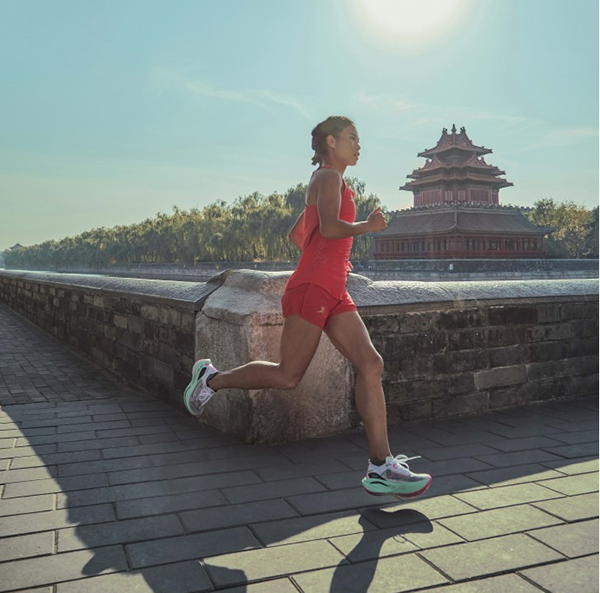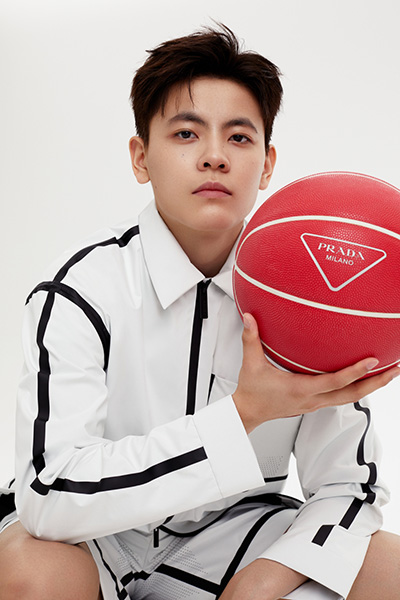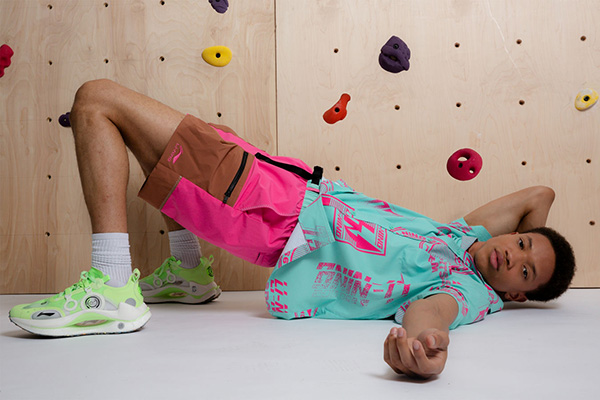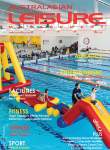A significant element possibly contributing to China’s sports industry’s growth is the fact that the government supports it by rolling out initiatives such as the National Fitness Plan which strives for fitness facilities across all counties, towns, and villages by 2025.
China’s National Fitness Plan is looking to have more than two sports instructors available to every 1,000 residents, to create or expand 2,000 fitness venues, and to replenish more than 5,000 fitness venues. By 2025, China plans to have full coverage of fitness facilities across all counties, towns, and villages, meaning all citizens should be no more than a 15-minute walk from a place to work out.
Goldman Sachs published a report this week detailing the predicted rise of the Chinese sports goods companies it tracks, forecasting that they will grow income between 15% to 21% in 2023. The report highlighted the good growth prospects for sport powerhouses Anta Sports, Li-Ning, and Xtep.
Yicai Global reported last year that Anta’s revenue in China overtook Nike’s for the first time. Its revenue climbed 8.8% year on year to US$7.8 billion (RMB 53.7 billion) in 2022, topping Nike’s US$7.4 billion and making Anta Sports Products the first Chinese sportswear brand to take the lead at home for more than a decade. (Launched in August 2016, Yicai Global is the English-language news service of Yicai Media Group, the financial news arm of Shanghai Media Group, which is one of China's largest state-owned media conglomerates.)
Yicai Global also reported Adidas China, once the second-biggest player in the Chinese sportswear market, was replaced by China’s Li Ning last year, dropping to fourth place.
Li-Ning Company Limited, a Chinese sportswear and sports equipment company founded by former Olympic gymnast Li Ning, has used sponsorship deals, particularly with athletes and sports teams, both in China and abroad, to raise its profile.
Li-Ning founded the company in 1990 with the simple goal of providing Chinese athletes a national brand to wear on the world stage of the Olympics – historically one of the West’s rare portals into authentic Chinese culture.
The company’s website states “after almost three decades, we are excited to leverage our intrinsic understanding of the athlete’s body and fuse it with an aesthetic, an attitude, and a sense of style that is deeply and uniquely Chinese — yet intended for all.”

In March 2023, Xtep released its 2022 annual results which revealed revenue reached a record high of RMB 12,930 million. Revenue of the core Xtep brand achieved a record high of RMB11,127.9 million -a significant 25.9% growth year on year.
Against the backdrop of the pandemic and macro uncertainties, Xtep’s business continued to demonstrate strong resilience with Ding Shui Po, Chairman and Chief Executive of Xtep International Holdings Limited sharing “while running continued to enjoy the fastest growth momentum of any sports category, we spared no effort to strengthen the largest running ecosystem in Mainland China to maintain our leadership position in running. We are optimistic about the business outlook for 2023 and beyond as benefited from the recent border reopening. Moreover, the launch of a nationwide fitness plan in Mainland China from 2021-2025, with a commitment to increasing sports facilities and resources and raising the rate of regular exercise among the population, will drive the total value of the country’s sports industry to RMB5 trillion by 2025. “
China is also gaining further significance in the sports world with luxury fashion houses increasingly turning to Chinese sports stars as brand representatives. For instance, Swiss watch leader IWC appointed Olympic gold-medallist Eileen Gu as its ambassador last year; this year, Alfa Romeo Formula One driver Zhou Guanyu was named as Dior’s endorser in China; and earlier this week, Prada announced it had appointed basketball player Yang Shuyu as its latest brand ambassador in the country.

According to Jing Daily, hype around domestic players such as Li-Ning is intensifying, and the trending “gorpcore” aesthetic is driving sales for brands such as Anta-owned Amer Sports’ Arc’teryx. Anta now owns leading German sports brand Fila, as well as Amer Sports, which owns not only the Arc’Teryx but also Salomon label, further boosting its revenue streams.
Gorpcore has been around since 2017. The phrase was first coined by The Cut, inspired by the expression ‘good ol' raisins and peanuts,’ a term for describing trail mix which is the snack of choice by hikers, who largely wear the garb that the trend gravitates towards. In tandem with the no-fuss, casual attire of normore, and Gorpcore was born. At the crux of gorpcore is the idea that nothing is more stylish than clothes that are, actually, not stylish. Clothing that is practical and functional are the apex, as the clothing is traditionally designed for activities that require functional attire like skiing, hiking, trail-running and mountain biking.
The rise in China's sportswear industry is supported by China’s National Fitness Plan targeting students. According to the plan, students should have two hours a day for sports and fitness, including at least one hour of off-campus sports. For the elderly, the plan recommends that governments promote activities suitable for such populations, reduce barriers to access, and improve facilities for rehabilitation and people with disabilities.
Image. Li-Ning is one of the local brands paving the way for China's global sportswear takeover. Credit: Li-Ning; Image centre: Xstep spared no effort to strengthen the largest running ecosystem in Mainland China. Credit: Xstep; Image above: Prada has named Chinese basketball player Shuyu Yang as its latest brand ambassador. Credit: Prada
About the author
Karen Sweaney
Co-founder and Editor, Australasian Leisure Management
Artist, geoscientist and specialist writer on the leisure industry, Karen Sweaney is Editor and co-founder of Australasian Leisure Management.
Based in Sydney, Australia, her specific areas of interest include the arts, entertainment, the environment, fitness, tourism and wellness.
She has degrees in Fine Arts from the University of Sydney and Geological Oceanography from UNSW.
Read more from this author
Related Articles
17th April 2023 - Rebuilt Beijing Workers’ Stadium hosts capacity crowd as fans return to China stadia
16th April 2023 - China’s Qitaihe sets up foundation to drive ice-and-snow sport development
2nd December 2022 - China’s public sector pledges to provide infrastructure and more resources for outdoor activities
10th November 2022 - North East China looks to boost sports development and national fitness through rowing
21st September 2021 - Xi’an municipal government considers China National Games as opportunity to focus on wellness
1st February 2021 - New report analyses growth of the Chinese fitness industry
10th March 2021 - FIBO China set to be staged as hybrid event with world’s first post-COVID on-site fitness show
22nd April 2020 - FIBO CHINA 2020 suspended to prevent spread of COVID-19
7th July 2019 - FIBO CHINA grows to become Asia’s leading fitness event









